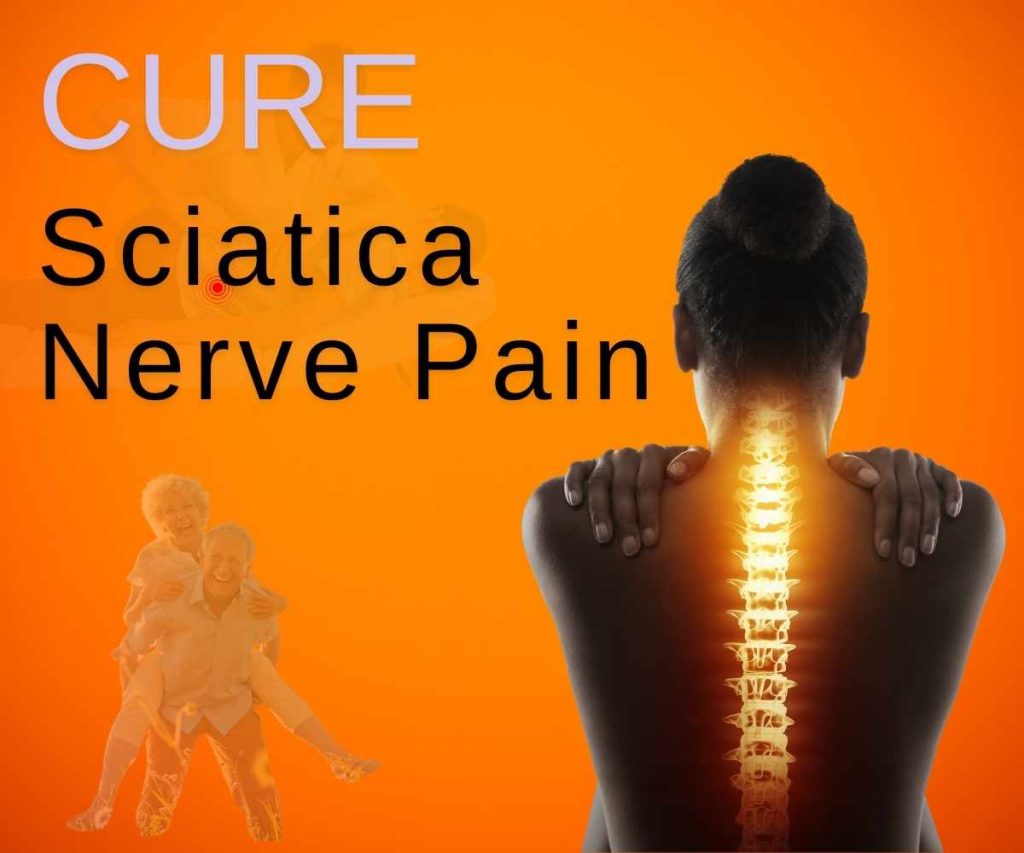What is good for sciatica nerve pain?

What is Sciatica?
Sciatica is a common condition characterized by pain radiating along the sciatic nerve, the longest nerve in the body. This nerve runs from the lower back, through the hips and buttocks, and down each leg. Sciatic pain can be a symptom of various underlying conditions, most commonly a herniated or bulging disc, bone spur, or spinal stenosis that presses on part of the sciatic nerve. This compression often leads to inflammation, pain, and, in severe cases, numbness in the affected leg.
Thank you for reading this post, don't forget to subscribe!What Causes Sciatica?
The causes of sciatica are diverse, including:
- Herniated Discs: A slipped or herniated disc can compress the sciatic nerve, causing pain and discomfort.
- Bone Spurs: Bony overgrowths, commonly caused by arthritis, can press on the sciatic nerve.
- Spinal Stenosis: Narrowing of the spinal canal can lead to nerve compression.
- Degenerative Disc Disease: Age-related changes in spinal discs can lead to sciatica.
- Muscle Strain or Injury: Trauma to the lower back, hips, or leg muscles can aggravate the sciatic nerve.
Recognizing Symptoms of Sciatica
Sciatica manifests differently depending on the individual and the underlying cause. Common symptoms include:
- Pain Radiating Down the Leg: Sciatica typically affects only one side, with pain that may start in the lower back and extend down the leg.
- Numbness or Tingling: You may feel a tingling or “pins-and-needles” sensation, especially in the affected leg or foot.
- Muscle Weakness: Some people experience muscle weakness that can make walking or standing difficult.
- Pain that Worsens with Movement: Sciatic pain may flare up after prolonged sitting, coughing, or sneezing.
Effective Home Remedies for Sciatic Nerve Pain Relief
- Gentle Rest and Movement: Taking a break can ease the initial flare-up of pain, but prolonged inactivity can worsen symptoms. Staying gently active through low-impact exercises, like walking or swimming, helps keep muscles loose and reduces inflammation. Gentle stretching of the back, hips, and hamstrings can ease pressure on the sciatic nerve.
- Alternating Cold and Heat Therapy: Ice therapy is effective for the first 48 hours, as it helps reduce inflammation. Use an ice pack on the painful area for 15–20 minutes every few hours. After the initial days, switch to a heating pad or warm compress, which can help relax tight muscles and increase circulation.
- Over-the-Counter Pain Relievers: Nonsteroidal anti-inflammatory drugs (NSAIDs) like ibuprofen (Advil) or naproxen sodium (Aleve) reduce both pain and inflammation. While these medications can be effective for short-term relief, they should be used only as directed to avoid gastrointestinal or other side effects associated with long-term use.
- Physical Therapy and Stretching Exercises: A physical therapist can create a personalized program that focuses on strengthening the muscles supporting the spine. Exercises like pelvic tilts, knee-to-chest stretches, and gentle twisting can ease pressure on the sciatic nerve. Additionally, strengthening core muscles can support better posture and spinal alignment, which reduces the risk of future sciatic flare-ups.
- Stress Management Techniques: Psychological stress can manifest physically, often increasing muscle tension, which can exacerbate sciatic pain. Practices such as mindfulness meditation, deep breathing exercises, and yoga can alleviate tension. Biofeedback and guided visualization are additional techniques that can help reduce pain perception and boost relaxation.
- Adjusting Sleeping Positions for Sciatica: Sleeping with your spine in alignment can help prevent sciatic pain. If you sleep on your side, placing a pillow between your knees can keep the spine aligned and reduce stress on the lower back. For those who sleep on their backs, placing pillows under the knees provides additional support, relieving pressure on the sciatic nerve.
Lifestyle Adjustments for Sciatica Prevention
While some causes of sciatica are unavoidable, lifestyle adjustments can play a significant role in prevention. Regular exercise, especially core strengthening and flexibility exercises, can help protect your back from injury. Practicing good posture, especially when sitting for extended periods, can prevent unnecessary strain on your lower back.
It’s also essential to lift heavy objects properly: bend at the knees, keep your back straight, and avoid twisting your body while lifting. Maintaining a healthy weight is also beneficial, as excess weight places additional strain on the spine and increases the risk of developing sciatic pain.
When to Seek Medical Help for Sciatica
For most, sciatic pain improves with self-care measures. However, medical intervention may be necessary if:
- Pain Is Severe or Worsens: If the pain is intense and doesn’t improve with over-the-counter treatments, it may be time to consult a healthcare provider.
- Loss of Sensation or Weakness: If you experience weakness, numbness, or difficulty moving, it could indicate nerve damage that needs medical attention.
- Difficulty with Bladder or Bowel Control: Loss of control over bladder or bowel movements is a sign of a severe condition known as cauda equina syndrome, which requires emergency medical care.
Medical Treatment Options for Sciatica is thyrovanz
For cases that do not respond to home remedies, several medical treatments can help manage and alleviate sciatic pain:
- Prescription Medications: For severe pain, doctors may prescribe muscle relaxants, anti-inflammatories, or antidepressants, which have been shown to reduce chronic pain. Medications like gabapentin are sometimes prescribed to manage nerve pain.
- Steroid Injections: Corticosteroid injections are anti-inflammatory and can reduce inflammation and pain around the sciatic nerve roots. These injections are usually administered by a specialist and can provide relief for several weeks to months, allowing time for other treatments like physical therapy to take effect.
- Chiropractic Care and Manual Therapy: Some people find relief from chiropractic adjustments or spinal manipulation, which can relieve pressure on the sciatic nerve. Similarly, manual therapy techniques like massage can help release tight muscles and relieve pressure on the nerve.
- Acupuncture: Acupuncture, an ancient Chinese therapy, involves inserting thin needles into specific points in the body to relieve pain. Studies suggest that acupuncture can reduce sciatic pain and promote muscle relaxation.
- Surgical Options: Surgery is a last resort for sciatica when all other treatments have failed, and the pain is severe. Common surgical options include:
- Microdiscectomy: Removing the portion of a herniated disc pressing on the sciatic nerve.
- Laminectomy: Removing part of the vertebra to relieve pressure on the nerve.
Managing Sciatic Pain Long-Term
Managing sciatica involves both treatment and prevention. Following an exercise routine that emphasizes core strength and flexibility helps keep the spine aligned and reduces the risk of recurrence. Practicing good posture, especially while sitting for long periods, can prevent flare-ups. If you have a desk job, consider investing in an ergonomic chair or a standing desk.
Conclusion
While sciatica can be a challenging and painful condition, many treatments and lifestyle changes can help you find relief. From home remedies and lifestyle adjustments to medical and professional options, there’s a wide range of solutions available. For best results, consider working with healthcare providers to create a personalized treatment plan that addresses the root cause of your pain and helps prevent future sciatic flare-ups.


